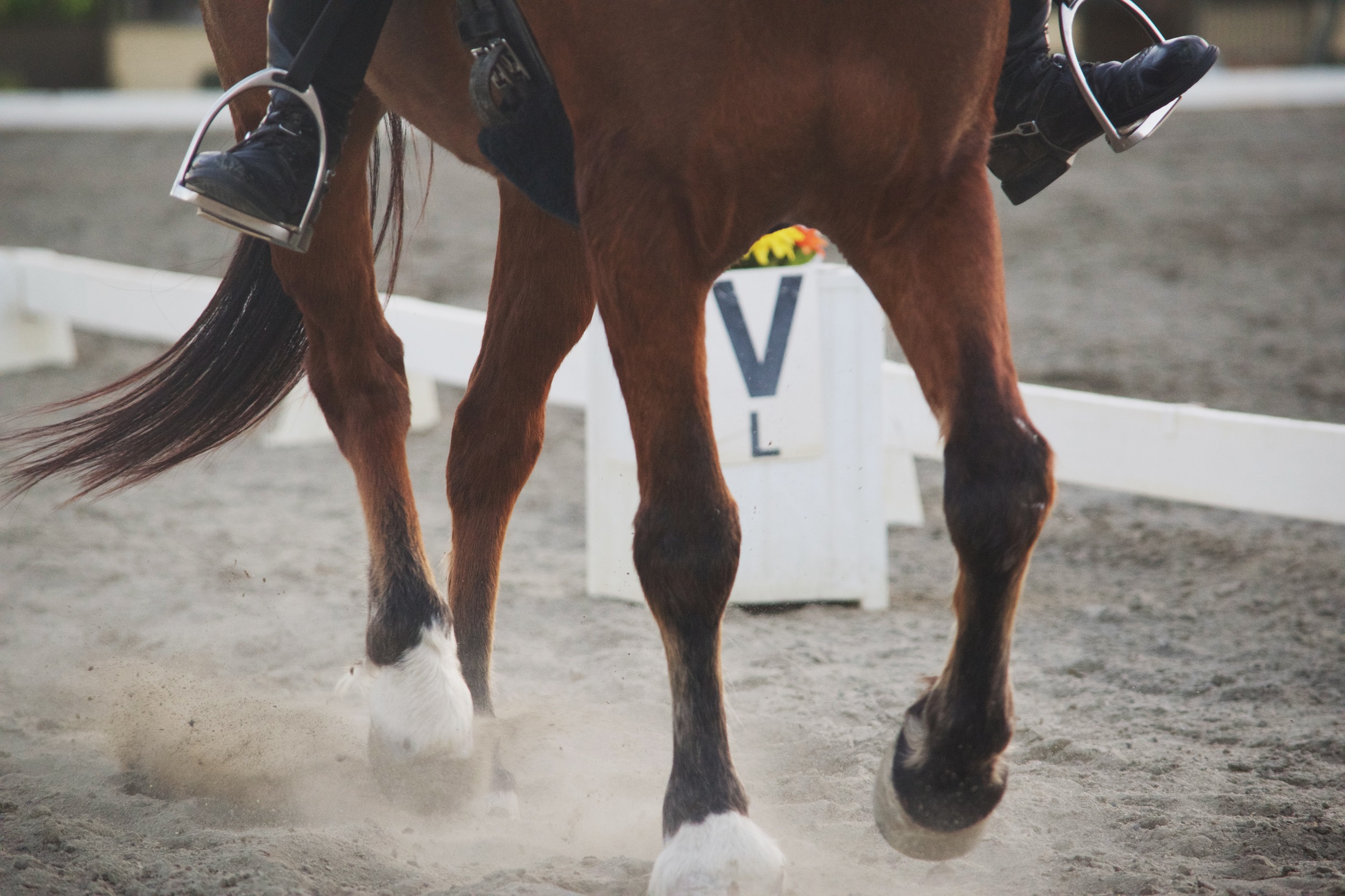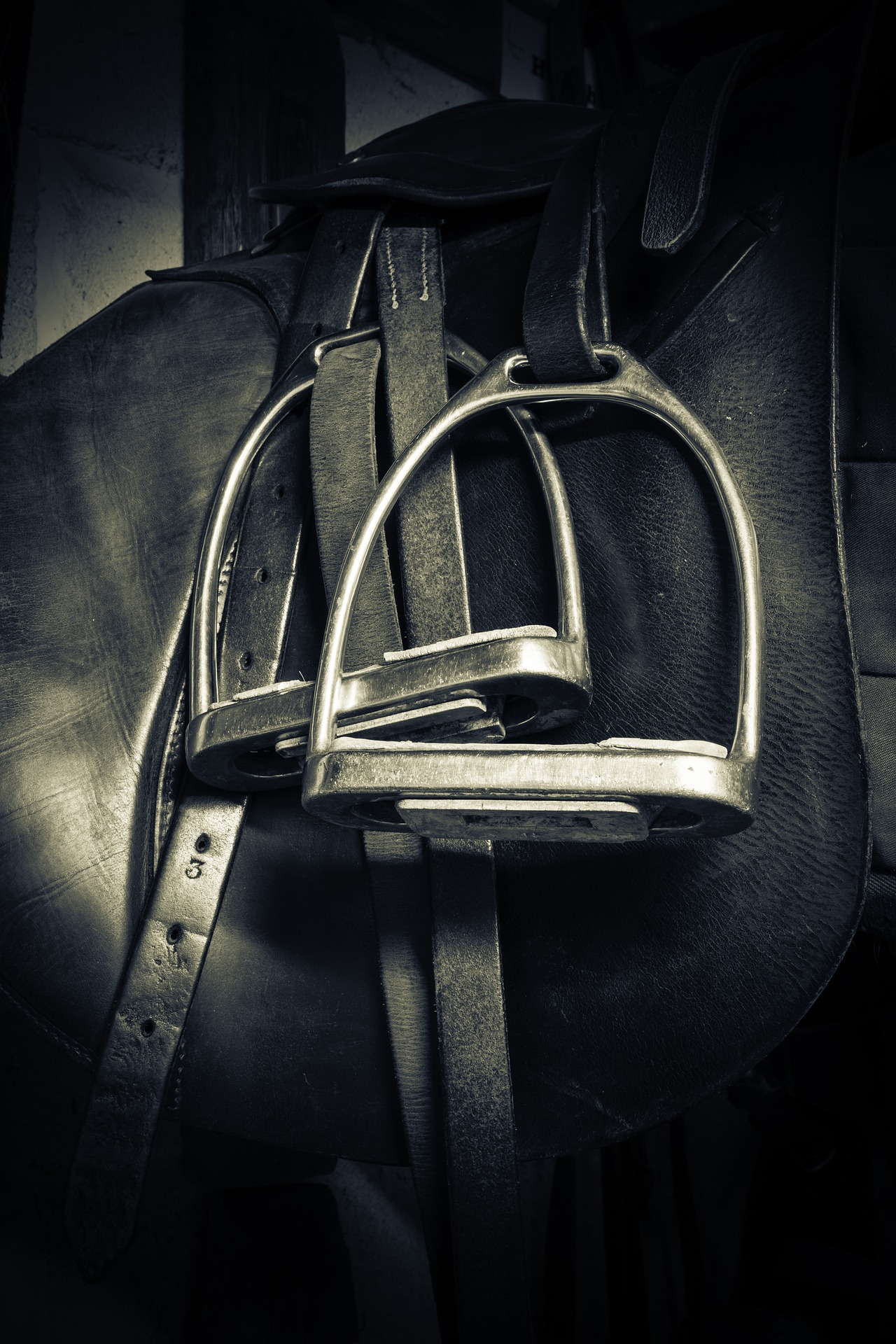Dressage aims to create a willing supple horse that moves rhythmically with impulsion. Not only will he produce a harmonious performance, but he will also physically benefit from correct training.
Here are four excellent exercises to help achieve relaxation, rhythm, suppleness and impulsion in your equine partner.
Leg-Yield
The leg yield accomplishes several goals. While supplying and loosening the horse, it also teaches him obedience to the rider’s leg, asking him to move laterally and engage his hind end.
His neck and body should be straight, with his poll flexed slightly away from the direction of movement. His inside legs cross in front of the outside ones as he moves forwards and sideways. (‘Inside’ is the same side as his poll flexion.)
The rider places more weight on the inside seat bone, and drives the quarters sideways with the inside leg slightly behind the girth. The outside leg and rein prevent any rushing and falling out on the outside shoulder.
From the long side of the arena, leg-yield on a diagonal line to a point 5 meters in, then leg-yield back out to the arena boundary. Start with gentle angles, increasing the steepness a little as the horse becomes comfortable with the movement.
When your horse is more proficient, ride several sets of leg yields down the long side of the arena.
But don’t do too many at one time, give plenty of support with the outside aids, and make sure the horse isn’t bent in his neck.
Lengthening and Shortening of Stride
Lengthening and shortening the horse’s stride is an ideal way to create impulsion and develop contact. The horse builds his back muscles as he engages his hind end and pushes from behind, rather than pulling himself forwards on the forehand. In the process, he learns to accept the bit instead of leaning on it.
Begin in trot. Develop a working trot, with the horse’s hind hooves landing on the imprints of his front feet. Once this active gait has been established, increase the forward driving aids with your seat and legs to ask the horse to lengthen his stride. Maintain a firm connection on the reins to support him.
‘Lengthening’ doesn’t mean going faster. You keep the same tempo but cover more ground with each stride. The aids must be definite but not sudden, and the horse mustn’t be allowed to run. You should feel a substantial increase in power as the horse’s hind legs come farther underneath him.
After a few steps, bring him back to a working trot by reducing the drive from your seat and not following the more significant movement lengthening with your body.
Repeat this several times on both reins to encourage him to use his hind end, and keep him light and listening to your aids.
Then try this exercise in walk and canter.
Rein-back
The rein-back tests suppleness and obedience. It is also advantageous for lifting a horse that leans on the hand by increasing the weight on his hind legs and refocusing a horse that ignores his rider’s aids.
His legs move back in diagonal pairs (like the trot) on a straight line. In a dressage test, Judges will ask the horse to go forwards immediately afterwards, so it’s important not to train him to halt after every rein-back.
Stand him square before you start. Bring your upper body a fraction forwards to lighten your seat. Apply leg pressure behind the girth to ask the horse to take steps while your hands restrain his forward movement.
If your horse is new to the rein-back or is not paying attention to you, your reins will need to be more restrictive, with correspondingly strong leg aids. But never pull: this will only create tension and resistance. He has to move backwards willingly. Squeeze on the reins with each step to encourage the horse to reverse, feel him relax in the mouth and release the pressure between strides as a reward.
Take care to ensure he is moving straight. After 4-5 steps back, immediately ask him to move forwards again while sitting upright and softening the hands.
Here is a valuable trick to preparing a horse for the rein-back during his training: ‘jiggle’ your seat in the saddle to loosen his spine. It helps him perform a challenging exercise.
Note that the score for this movement is doubled in dressage tests of all levels, so a well-executed rein-back is well worth practising!
Simple Change of Lead
In this movement, the horse transitions from canter to walk then strikes off in canter on the other lead. It’s called a ‘simple’ change of lead to differentiate it from a ‘flying’ change and tests the horse’s willingness to obey the rider’s aids in a relaxed, supple manner.
Begin by riding transitions from canter to several strides of trot, then back to canter on the other lead in a straight line. When the horse has learned to do this smoothly, introduce the simple change of lead through the walk.
Use half-halts on the outside rein at the canter while driving the horse forwards with your seat and legs to raise his shoulders and lighten his forehand. The horse will carry more weight on his hind end, allowing for a soft transition into a walk.
He will need to take quite a few walk steps initially, but the goal is to transition into the new canter after only one or two. Ask for a few active and even strides while you’re getting ready to apply the aids for the other lead. Flex your horse to the new side, then ask for a canter.
Be sure to prepare correctly for the downward and upward transitions so they are executed promptly yet smoothly.
Horses are naturally cooperative animals. By making their work physically and mentally easier for them, we encourage them to give their best. Exercises like that help create an obedient and relaxed horse that will be a generous riding partner for many years.
Resources:


The ‘leg yield’ and ‘rein back’ were my go-to exercises, at least back when I was being taught dressage as a girl. The change of lead is a bit obvious but I suppose I get why it’s listed.